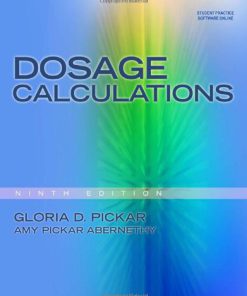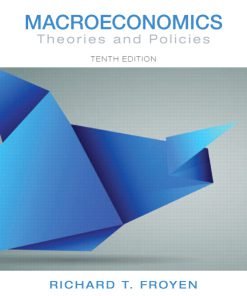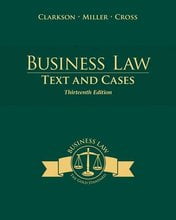Test Bank Horngrens Financial and Managerial Accounting 5th Edition Matsumura Mattison
$35.00 Original price was: $35.00.$26.50Current price is: $26.50.
Test Bank Horngrens Financial and Managerial Accounting 5th Edition Matsumura Mattison
This is completed downloadable of Test Bank Horngrens Financial and Managerial Accounting 5th Edition Matsumura Mattison

Product Details:
- ISBN-10 : 0133866297
- ISBN-13 : 978-0133866292
- Author: Tracie L. Miller-Nobles (Author), Brenda L. Mattison (Author), Ella Mae Matsumura (Author)
Horngren’s Financial and Managerial Accounting presents the core content of the accounting course in a fresh format designed to help today’s learners succeed. The Eleventh Edition expands on the proven success of the significant revision to the Horngren franchise and uses what the authors have learned from focus groups, market feedback, and colleagues to create livelier classrooms, provide meaningful learning tools, and give professors resources to help students inside and outside the class. First, the authors ensured that content was clear, consistent, and above all, accurate. Every chapter is reviewed to ensure that students understand what they are reading and that there is consistency from chapter to chapter. The author team worked every single accounting problem and employed a team of accounting professors from across the nation to review for accuracy.
Table of Content:
Chapter 2 Recording Business Transactions
Learning Objective 2-1
1) Which is a true statement regarding the accounting equation?
A) The equation can be stated as assets minus liabilities equals equity.
B) The equation consists of three parts: assets, liabilities, and net income.
C) The equation is an optional tool for accountants to use.
D) The equation does not need to balance during a specific period.
Answer: A
Diff: 1
LO: 2-1
AICPA Functional: Measurement
PE Question Type: Concept
H2 : What is an Account? (H1)
2) A payment of an expense in advance is called a prepaid expense.
Answer: TRUE
Diff: 1
LO: 2-1
AICPA Functional: Measurement
PE Question Type: Concept
H2 : Assets
3) An accounts receivable requires the business to pay cash in the future.
Answer: FALSE
Diff: 1
LO: 2-1
AICPA Functional: Measurement
PE Question Type: Concept
H2 : Assets
4) The account title used for recording the payment of rent in advance for an office building is ________.
A) Prepaid Rent
B) Rent Payable
C) Rent Revenue
D) Rent Expense
Answer: A
Diff: 1
LO: 2-1
AICPA Functional: Measurement
PE Question Type: Concept
H2 : Assets
5) Which of the following is an asset account?
A) Wages Payable
B) Notes Payable
C) Unearned Revenue
D) Accounts Receivable
Answer: D
Diff: 1
LO: 2-1
AACSB: Application of knowledge
AICPA Functional: Measurement
PE Question Type: Application
H2 : Assets
6) A customer’s promise to pay in the future for services or goods sold is called a(n) ________.
A) Accounts Receivable
B) Accounts Payable
C) Unearned Revenue
D) Notes Payable
Answer: A
Diff: 1
LO: 2-1
AICPA Functional: Measurement
PE Question Type: Concept
H2 : Assets
7) Which of the following is an asset account?
A) Salaries Expense
B) Accounts Payable
C) Service Revenue
D) Prepaid Expense
Answer: D
Diff: 1
LO: 2-1
AACSB: Application of knowledge
AICPA Functional: Measurement
PE Question Type: Application
H2 : Assets
8) Which of the following is an asset account?
A) Cash
B) Notes Payable
C) Dividends
D) Unearned Revenue
Answer: A
Diff: 2
LO: 2-1
AACSB: Application of knowledge
AICPA Functional: Measurement
PE Question Type: Application
H2 : Assets
9) Provide an explanation for each of the follow asset accounts.
Account Name Explanation
Accounts Receivable
Prepaid Expense
Notes Receivable
Answer:
Account Name Explanation
Accounts Receivable A customer’s promise to pay in the future for services or goods sold. Often described as “On Account.”
Prepaid Expense A payment of an expense in advance. It is considered an asset because the prepayment provides a benefit in the future.
Notes Receivable A written promise that a customer will pay a fixed amount of money and interest by a certain date in the future. Often more formal than an Accounts Receivable.
Diff: 1
LO: 2-1
AICPA Functional: Measurement
PE Question Type: Concept
H2 : Assets
10) Liabilities are economic resources that are expected to benefit the business in the future.
Answer: FALSE
Diff: 1
LO: 2-1
AICPA Functional: Measurement
PE Question Type: Concept
H2 : Liabilities
11) A payable involves a future receipt of cash.
Answer: FALSE
Diff: 1
LO: 2-1
AICPA Functional: Measurement
PE Question Type: Concept
H2 : Liabilities
12) Unearned revenue is a liability account.
Answer: TRUE
Diff: 1
LO: 2-1
AICPA Functional: Measurement
PE Question Type: Concept
H2 : Liabilities
13) ________ represents a debt owed for renting a building currently.
A) Prepaid Rent
B) Rent Payable
C) Rent Revenue
D) Rent Expense
Answer: B
Diff: 1
LO: 2-1
AICPA Functional: Measurement
PE Question Type: Concept
H2 : Liabilities
14) Which of the following is a liability account?
A) Accounts Receivable
B) Cash
C) Building
D) Notes Payable
Answer: D
Diff: 1
LO: 2-1
AACSB: Application of knowledge
AICPA Functional: Measurement
PE Question Type: Application
H2 : Liabilities
15) Which of the following is a liability account?
A) Accounts Payable
B) Prepaid Expense
C) Salaries Expense
D) Service Revenue
Answer: A
Diff: 1
LO: 2-1
AACSB: Application of knowledge
AICPA Functional: Measurement
PE Question Type: Application
H2 : Liabilities
16) A liability created when a business collects cash from customers in advance of providing services or delivering goods is called a(n) ________.
A) notes receivable
B) unearned revenue
C) accrued liability
D) service revenue
Answer: B
Diff: 1
LO: 2-1
AICPA Functional: Measurement
PE Question Type: Concept
H2 : Liabilities
17) Which of the following is a liability account?
A) Service Revenue
B) Building
C) Accounts Receivable
D) Unearned Revenue
Answer: D
Diff: 1
LO: 2-1
AACSB: Application of knowledge
AICPA Functional: Measurement
PE Question Type: Application
H2 : Liabilities
18) Provide an explanation for each of the follow liability accounts.
Account Name Explanation
Accounts Payable
Accrued Liability
Unearned Revenue
Answer:
Account Name Explanation
Accounts Payable A promise made by the business to pay a debt in the future. Arises from a credit purchase.
Accrued Liability An amount owed but not paid.
Unearned Revenue Occurs when a company receives cash from a customer but has not provided the product or service. The promise to provide services or deliver goods in the future.
Diff: 1
LO: 2-1
AICPA Functional: Measurement
PE Question Type: Concept
H2 : Liabilities
19) The stockholders’ claim to the assets of a business is called equity or stockholders’ equity.
Answer: TRUE
Diff: 1
LO: 2-1
AICPA Functional: Measurement
PE Question Type: Concept
H2 : Equity
20) Dividends and expenses increase equity.
Answer: FALSE
Diff: 1
LO: 2-1
AICPA Functional: Measurement
PE Question Type: Concept
H2 : Equity
21) Revenues and contributions of the stockholders in the business increase equity.
Answer: TRUE
Diff: 1
LO: 2-1
AICPA Functional: Measurement
PE Question Type: Concept
H2 : Equity
22) Nuptial, Inc. paid the rent for the current month in cash. Which of the following accounts will be used to record the transaction?
A) Prepaid Rent
B) Rent Payable
C) Rent Revenue
D) Rent Expense
Answer: D
Diff: 1
LO: 2-1
AACSB: Application of knowledge
AICPA Functional: Measurement
PE Question Type: Application
H2 : Equity
23) Amounts earned from delivering goods or services to customers are called ________.
A) notes receivable
B) unearned revenues
C) equity
D) revenues
Answer: D
Diff: 1
LO: 2-1
AICPA Functional: Measurement
PE Question Type: Concept
H2 : Equity
24) Common Stock is a separate account in the ________ category of the accounting equation.
A) equity
B) asset
C) liability
D) revenue
Answer: A
Diff: 2
LO: 2-1
AICPA Functional: Measurement
PE Question Type: Concept
H2 : Equity
25) A chart of accounts is a detailed record of the changes in a particular asset, liability, or equity account during a specified period.
Answer: FALSE
Diff: 1
LO: 2-1
AICPA Functional: Measurement
PE Question Type: Concept
H2 : Chart of Accounts
26) A chart of accounts is a list of all of a company’s accounts with their account numbers.
Answer: TRUE
Diff: 1
LO: 2-1
AICPA Functional: Measurement
PE Question Type: Concept
H2 : Chart of Accounts
27) Which of the following is provided in a typical chart of accounts?
A) Account balance
B) Account number
C) Dates of transactions
D) Transaction amounts
Answer: B
Diff: 1
LO: 2-1
AACSB: Application of knowledge
AICPA Functional: Measurement
PE Question Type: Application
H2 : Chart of Accounts
28) A listing of all accounts in numerical order is called a(n) ________.
A) Ledger
B) Journal
C) Income statement
D) Chart of accounts
Answer: D
Diff: 1
LO: 2-1
AICPA Functional: Measurement
PE Question Type: Concept
H2 : Chart of Accounts
29) Companies use a ledger to show all of the increases and decreases in each account along with their balances.
Answer: TRUE
Diff: 1
LO: 2-1
AICPA Functional: Measurement
PE Question Type: Concept
H2 : Ledger
30) A chart of accounts provides more detail than a ledger.
Answer: FALSE
Diff: 1
LO: 2-1
AICPA Functional: Measurement
PE Question Type: Concept
H2 : Ledger
31) Which of the following is the record holding all the accounts, the changes in those accounts, and their balances?
A) Source document
B) Journal
C) Ledger
D) Trial balance
Answer: C
Diff: 1
LO: 2-1
AICPA Functional: Measurement
PE Question Type: Concept
H2 : Ledger
Learning Objective 2-2
1) The system of accounting in which every transaction affects at least two accounts is called the double-entry system.
Answer: TRUE
Diff: 1
LO: 2-2
AICPA Functional: Measurement
PE Question Type: Concept
H2 : What is Double-Entry Accounting? (H1)
2) Debit refers to the right side of the T-account, and credit refers to the left side.
Answer: FALSE
Diff: 1
LO: 2-2
AICPA Functional: Measurement
PE Question Type: Concept
H2 : The T-Account
3) A T-account is a summary device with credits posted on the left side of the vertical line.
Answer: FALSE
Diff: 1
LO: 2-2
AICPA Functional: Measurement
PE Question Type: Concept
H2 : The T-Account
4) A shortened form of the ledger is called a ________.
A) trial balance
B) balance sheet
C) chart of accounts
D) T-account
Answer: D
Diff: 1
LO: 2-2
AICPA Functional: Measurement
PE Question Type: Concept
H2 : The T-Account
5) An asset account is increased by a debit.
Answer: TRUE
Diff: 1
LO: 2-2
AICPA Functional: Measurement
PE Question Type: Concept
H2 : Increases and Decreases in the Accounts
6) A liability account is increased by a debit.
Answer: FALSE
Diff: 1
LO: 2-2
AICPA Functional: Measurement
PE Question Type: Concept
H2 : Increases and Decreases in the Accounts
7) A debit always means a decrease, and a credit always means an increase.
Answer: FALSE
Diff: 1
LO: 2-2
AICPA Functional: Measurement
PE Question Type: Concept
H2 : Increases and Decreases in the Accounts
8) Which of the following accounts decreases with a debit?
A) Accounts Receivable
B) Notes Payable
C) Cash
D) Rent Expense
Answer: B
Diff: 1
LO: 2-2
AACSB: Application of knowledge
AICPA Functional: Measurement
PE Question Type: Application
H2 : Increases and Decreases in the Accounts
People Also Search:
horngrens financial and managerial accounting
horngrens financial and managerial accounting 5th edition
horngrens financial and managerial accounting 5th edition test bank download pdf
horngrens financial and managerial accounting 5th edition download scribd
Related products
Test Bank
Test Bank for Decision Support and Business Intelligence Systems, 9th Edition: Efraim Turban
Test Bank
Test Bank for Clinical Immunology and Serology A Laboratory Perspective, 3rd Edition: Stevens











